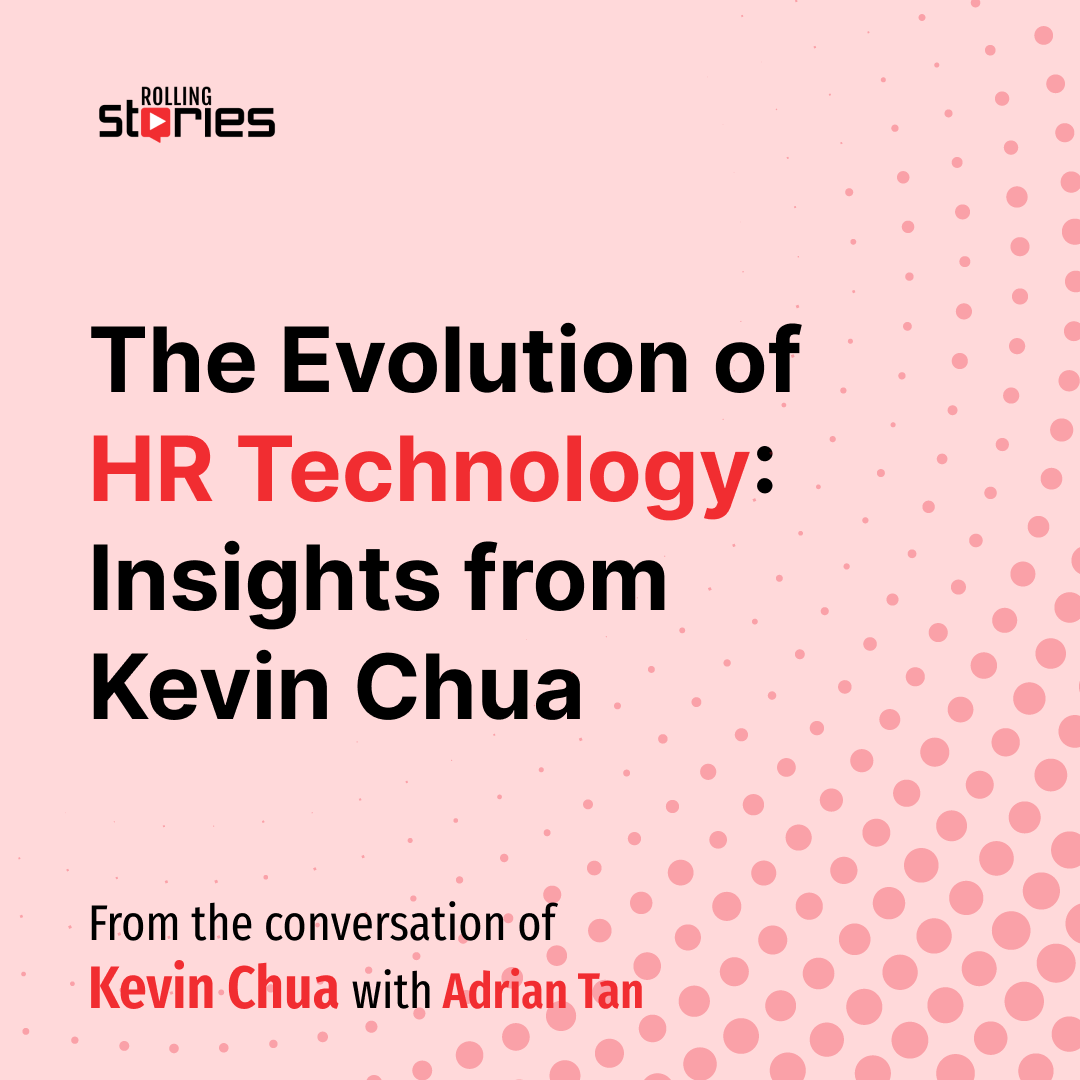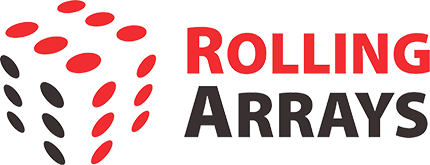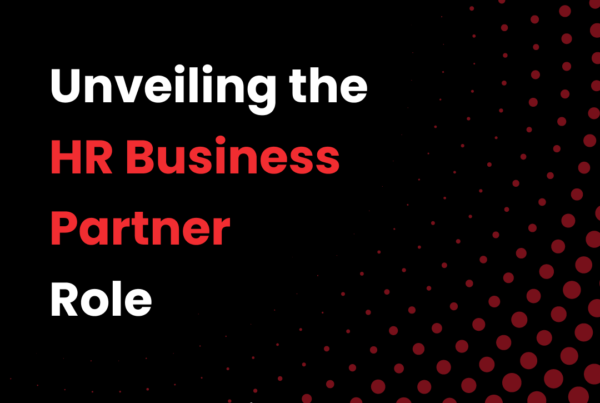
The Evolution of HR Technology: Insights from Kevin Chua
Sep 27 ,2023
Kevin Chua’s insights on the evolution of HR technology are indeed valuable for HR professionals looking to enhance their processes and stay ahead in the rapidly changing landscape of technology.
Join Adrian Tan and our esteemed guest Kevin Chua, Chief People Officer (Former) Ex NUS, Medtronic, Thermo Fisher with over 25 years of HR leadership experience. Together, we’ll delve deep into the world of HR technology, uncover insights, share strategies, and explore the ever-evolving landscape of HR tech to enhance efficiency, productivity, and the employee experience.
The Impact of Geographical and Industry Differences
Kevin’s extensive experience in both local and multinational organisations has given him unique insights into the impact of geographical and industry differences on HR technology implementation. He highlights that while many issues are transferable, the context varies significantly. The decision-making process and the level of autonomy differ depending on whether the organisation is a headquarters or a regional office. Kevin explains:
Often, when I work in multinationals as part of the regional team, I have input into the global direction, but it’s mainly on execution. Whereas if you are the headquarters, you decide on everything and solicit inputs from your stakeholders. The buck stops with you, and you must make those decisions.
He also emphasises the importance of considering the organisation’s stage and maturity level when implementing HR technology. The decision-making process and the integration of systems become more complex in headquarters-type organisations. Kevin elaborates:
In HR technology, the big players are workday and SAP success factors. In big multinationals, the decision is made, and we execute. In the headquarters-type organisation, the decision-making rests with the headquarters function. You have to decide which system to go for, what are the pros and cons, and how to integrate with other systems.
The Evolution of HR Technology
Kevin takes us on a journey through the evolution of HR technology, from the days of Excel spreadsheets and Microsoft Access to the current era of mobile applications and chatbot virtual assistants. He highlights the shift from manual processes to automation and the increasing self-service capabilities for employees and managers. Kevin shares his firsthand experience:
“I remember being part of a big multinational, and we had multiple versions of SAP and different bespoke systems. There was a whole team of people trying to consolidate data. Fast forward to today, we see applications on mobile phones and a lot more self-service. Even chatbot virtual assistants are empowering non-technical HR professionals to automate tasks.”
He also mentions the importance of considering the context and pain points of the organisation when deciding which modules to implement first. Kevin explains:
“What is the biggest pain point? Where is the most manual work? We need to implement module by module or function by function. For example, we automated everything except the recruitment system in one organisation. We wanted to focus on the most manual processes and then gradually implement the rest.”
Successful Implementation Strategies
Implementing HR technology can be complex and challenging. Kevin shares valuable insights and strategies for successful implementation based on his experience. He emphasises the importance of understanding the organisation’s baseline and appetite for change. Kevin advises:
“Organizations need to assess their baseline and determine why they want to implement HR technology and how much change they can handle. Implementing module by module or function by function can be a good approach if the baseline is nothing. Identify the pain points and quick wins to prioritise the implementation.”
He also highlights the significance of change management and the need to manage expectations and support users throughout the implementation process. Kevin explains:
Expect hiccups and challenges. The success of HR technology implementation, apart from the technology itself, is about change management. We must provide support through self-service guides, user experts, and authentic listening to address pain points and make improvements along the way.
Kevin emphasises the importance of not striving for perfection but instead focusing on getting the implementation 80% right and making improvements as needed. He advises against overwhelming the organisation with too many changes at once and suggests celebrating the success of each module implementation before moving on to the next. Kevin shares his experience:
We implemented a core set of modules over six months and celebrated the success before launching the next set. It’s mentally draining for the implementation team to have a continuous stream of launches without a break. Phasing the implementation and allowing time for adjustments is crucial.
Future Trends and Outlook
Looking ahead, Kevin discusses the future trends in HR technology and the potential impact on organisations. He mentions the emergence of metaverse, AI, and machine learning as areas to watch. While these technologies are still early, Kevin advises organisations to stay informed and explore their potential applications. He also highlights the importance of office productivity tools and automation beyond HR systems. Kevin suggests:
Implementing chatbots for employee self-service can be a game-changer. It can streamline processes and provide quick answers to common queries. Additionally, organisations should explore office productivity tools like DocuSign, PowerDocs, and RPA to automate administrative tasks and improve efficiency.
Kevin also mentions the growing importance of mental well-being apps and the potential for coaching apps to reach a wider audience. He encourages organisations to evaluate the ROI and consider implementing these tools to support employee well-being and development. Kevin concludes:
HR professionals must stay updated on the latest technology trends and assess their relevance to our organisations. By embracing the right tools and continuously improving our HR technology landscape, we can enhance efficiency, productivity, and employee experience.
In conclusion, Kevin Chua’s insights provide valuable guidance for HR professionals navigating the ever-evolving landscape of HR technology. By understanding the impact of geographical and industry differences, embracing the evolution of HR technology, and implementing strategies for successful implementation, organisations can leverage technology to drive positive change and enhance their HR processes. The future holds exciting possibilities, and HR professionals must stay informed and adapt to the changing technological landscape to stay ahead.
Recent Podcast
About Rolling Arrays
Rolling Arrays has been driving SAP SuccessFactors-led HR Transformation since 2009. The company specialises in SF consulting, implementation, and support and also builds applications to enhance the utility of the SuccessFactors platform. It is committed to designing systems that help its customers to attract, develop and retain talented individuals. In 2021, Rolling Arrays was recognized as one of the top 75 fastest-growing companies in Singapore by The Straits Times & Statista.





